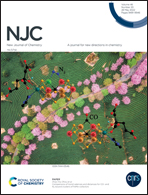Cellulose tris-(3,5-dimethyl phenyl carbamate) as a chiral stationary phase for enantiomeric determination of ofloxacin enantiomers and molecular docking study on the chiral separation mechanism
Abstract
In the present work, direct chiral separation of ofloxacin enantiomers was conducted using a Chiral MD (2) column as a chiral stationary phase (CSP) by a normal phase HPLC method, and then applied to enantiomeric quality control of two commercial pharmaceuticals containing the ofloxacin racemate and S-enantiomer, respectively. Experimental results indicated that the simultaneous addition of acid and alkaline additives to the mobile phase was important for improving the enantiomeric resolution. Combined with the molecular docking research, we found that the difference in the binding energy of each enantiomer interacting with CSP reached the maximum when the ofloxacin molecule was non-ionized. That is why both the acid and alkaline additives are necessary in the enantioseparation. Computer simulation results further revealed that hydrogen bonding, hydrophobic effects and π–π stacking were all involved in the stereoselective interaction, causing the difference in the binding strength with CSP, which eventually resulted in the chiral separation of the ofloxacin enantiomers.



 Please wait while we load your content...
Please wait while we load your content...